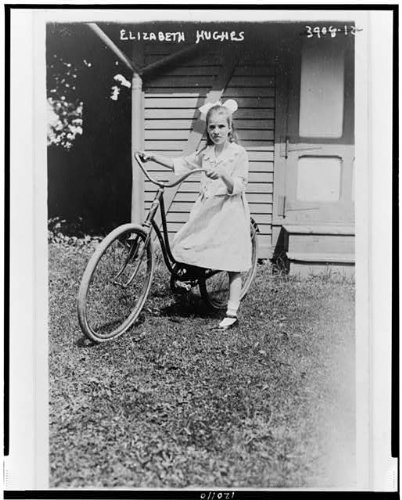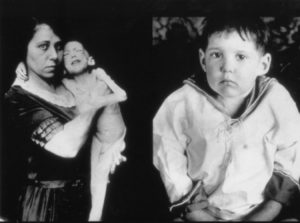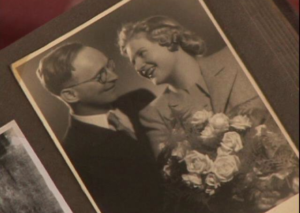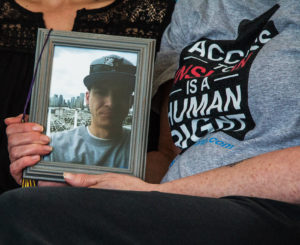The one thing you need to know about me as I tell this story is that I’m an insulin-dependent diabetic and have been for a decade and a half. My pancreas checked out years ago and no longer does much. Which means that I have to manually control how much insulin I take in so I can process the carbohydrates I eat too much of.
Today is World Diabetes Day in honor of Frederick Banting, and his team of scientists, who isolated insulin in 1922 and gave none-insulin producing diabetics a chance at life. The following post is based on a presentation I gave to the Kearney, NE, Torch Club in May of this year.
If you have a normal, functional pancreas, it will produce the right amount of insulin to process the carbs you have just eaten whether you have eaten a salad, a slice of birthday cake, drunk a Coke, eaten French fries or an order of drunken noodles. Not just sugar – all carbs, which the body eventually breaks down into sugar.
If you are diabetic, you either do not produce sufficient insulin, you cannot process the insulin or both. This leads to a toxic buildup of sugar in your bloodstream that eventually spills over into your urine.
Diabetes is an auto-immune disease that often, but not always, has a genetic component. It is generally described as having two forms:
- Type 1 or juvenile. The body rather suddenly stops producing insulin. This often afflicts children who have recently had a case of the flu or other viral infection. A few weeks later, the young person will start dropping weight, having an insatiable thirst, having to pee constantly, and suffering changes in vision. Were you to taste their urine, it would be sweet. (And yes, that used to be a diagnostic technique for diabetes – tasting the patient’s urine.) Treatment today is injection or infusion of insulin along with monitoring diet.
- Type 2, or adult onset, is characterized by insulin resistance. That is, the body can no longer efficiently process insulin. It is also possible that the pancreas will become stressed and gradually make less and less insulin. This will typically attack the patient gradually, and only in retrospect will the patient realize what is going wrong. This is my story. Treatment starts with diet, exercise and medication to lower insulin resistance. It may eventually require insulin to treat.
But then there is also… Gestational diabetes that can affect women when they are pregnant. Sometimes it goes away after delivery. Sometimes it doesn’t. It’s a form of insulin resistance brought on by placental hormones. And there is LADA – Latent Autoimmune Diabetes in Adults. It presents like Type 2 but then progresses over months or years to be more like Type 1. It can afflict thin, athletic adults as well as the overweight. My younger sister clearly has this form. I was once told by a diabetic researcher that there aren’t two types of diabetes, there are literally hundreds. Or, as they say in the diabetic community – YDMV (Your Diabetes May Vary).
In the rest of this blog post, I’m going to tell you the story of three diabetics and how access to (or lack thereof) to insulin changed their lives. I will reference my sources as we go through these stories.
It is possible I will have unattributed direct quotes here. These was originally written to be spoken, not read in print.
Elizabeth Hughes – The discovery of insulin brings new life to diabetics

Elizabeth Hughes as a child.
Elizabeth Hughes was the daughter of Charles Evan Hughes and Antoinette Carter Hughes. Hughes was an important man in turn-of-the-century United States, having served as an associate justice of the US Supreme Court; he stepped down to run for office as a Republican, and then was later reappointed to the court as the chief justice. He had been governor of New York, ran against Woodrow Wilson for the presidency, and was secretary of state. (This section is drawn from Breakthrough: Elizabeth Hughes, the Discovery of Insulin, and the Making of a Medical Miracle. By Thea Cooper and Arthur Ainsberg. St. Martins Press 2010
She was a normal, if precocious and somewhat small child. Like her father, she had a photographic memory. She loved playing in Central Park in NYC, which she considered her back yard. until age 11 in 1918, when she became a classic Type 1 diabetic. In the fall of that year, she came down with the flu. By March of the following year, she had a “unusually ravenous appetite and an unslakeable thirst.”
Given that her parents had every possible resource and privilege they could bring to bear to help their afflicted daughter, they sought treatment in 1919 from the doctor who had the best luck caring for diabetes – Dr. Frederick Allen. When the Hughes met with Dr. Allen, he did not have good news for them. (And he was generally a difficult man. He was severe and serious. Not a warm caring individual.)
He was going to have to tell this family that their daughter would likely be dead within a year.
Her mother pleaded – hoping for a miracle.
There would be no miracle, but there was one possible treatment – starvation.
A normal child Elizabeth’s age consumes about 2,200 calories a day. Dr. Allen would propose a diet for her starting with a fast and then going up to 400 calories a day, none of which would be carbohydrates.
Everything she ate would need to be weighed.
Her mother asked how long she would need to stay on this diet to be cured.
There would be no cure, she was told, only a lifetime of nearly starving to death. This stringent diet might give her 18 months to live.
In order to manage this diet, Elizabeth would have to move into Dr. Allen’s sanatorium.

Children on a diabetes starvation diet from before insulin was available.
The consequence of this treatment is that the patients would start looking like someone who had been imprisoned in a concentration camp or have been the victim of a famine.
Fortunately for Elizabeth, she would not need to stay on this cruel balance between dying of diabetes and starvation for too long. Because in 1921 and 22, doctors and researchers working in Toronto were closing in on the hormone (or pancreatic extract) that would eventually be identified as insulin and would if not cure diabetes, at least serve as a treatment.
The discovery of insulin could be it’s own blog post, but the more I dug into it, the less I wanted to talk about it. Let’s do the Cliff Notes version – multiple scientists and doctors around the world were working on the problem of treating diabetes. Everyone knew it had something to do with the pancreas, because if you gave a dog a panceactomy, the dog immediately became diabetic and died soon after. (This section is drawn from The Discovery of Insulin 25th Anniversary Edition, Michael Bliss. 1982, 2007, University of Chicago Press.)
By my best understanding, insulin was developed as a clinical product by a team of four people who often did not get along – a young doctor named Frederick Banting; a master’s student, Charles Best; a University of Toronto professor J.J.R. Macleod, and a medical researcher named J.B. Collip. Macleod and Banting would share the Nobel Prie for medicine for their work, and each of them would share their prize money with one of the other team members.
It was a challenge because the researchers did not know which of part of the pancreas was responsible. The research involved surgery on and experiments with many, many dogs, a number of rabbits, and even human beings. Banting was willing to test his pancreatic extract on patients, likely earlier than wise, because without insulin, the patient would soon die. When you knew your patients had a 100 percent chance of dying without treatment, such ethical decisions became easier.
Once insulin was isolated, our band of Canadian researchers thought that they were almost there. But not so fast – it turns out that manufacturing insulin in quantity turned out the be much more difficult than making it in the lab.
The basic process involved taking animal pancreases, mashing them up (ground sweetbreads) rinsing in a bath of either chilled alcohol or acetone, centrifuge the various solids to separate, further refine with dissolving in alcohol which must then be distilled off. But remember, insulin is sensitive to heat, so you can’t just boil off the alcohol or acetone.
Along with the difficulties in refining large quantities of insulin, there were fights over who would control the new medication. Some members of the team were reluctant to enter into a partnership with drug maker Eli Lilly because they wanted the drug to be freely available to everyone. Eventually, however, they did have to partner with Lilly.
So it is now spring of 1922. Elizabeth has been on the starvation diet for more than a year. Banting, one of the central scientists/doctor developing the new drug, is having to drink himself into oblivion every night in order to be able to sleep. The team is threatening to fall apart.
Most of the small amount of insulin being produced is going to Banting and his clinic. . An additional member of the team, Dr. Joe Gilchrist, who is a diabetic, tests each new batch of insulin on himself to help establish the strength of it. And word is starting to get out that there is actually a real treatment for diabetes. Doctors are coming and begging for vials of the life-saving extract.
By the spring of 1922, Elizabeth was 14-years-old, five feet tall, and weighed between 52 and 54 pounds. She was down to consuming 300 calories a day. Her mother found out about the discovery of insulin in Toronto, and wanted to get it for her daughter.
In August of 22, Dr. Allen visited Dr. Banting in Toronto When he came back to New York, he told his patients – “I think I have something for you.” Chief among these patients was Elizabeth. Allen took the tiny girl to Toronto for treatment directly from Banting. She was down to 45 pounds.
Elizabeth started getting two injections a day of insulin. Her diet gradually built up to 1,200 calories and then to a normal 2,200. She wrote to her mother:
“To think that I’ll be leading a normal, healthy existence is beyond all comprehension. Oh, it is simply too wonderful for words this stuff. Isn’t that unspeakably wonderful?”
There were still problems. The strength of the insulin was not reliable, which could lead to hypoglycemic (extreme low blood sugar) reactions, which have the potential to be deadly. She always covered with sores at injection sites.
But by the fall of 1922, Elizabeth was just one of several hundred patients being treated with insulin in North America.
Elizabeth Hughes graduated from Barnard College in 1929 and in 1930 married William T. Gossett. As an adult, she told no one of what she went through. Even her fiancé did not know until after they were engaged.
In 1980, historian Michael Bliss succeeded in tracking her down and interviewing her. In 1981 she died after suffering a heart attack. She had lived with diabetes for 60 years. When she had been diagnosed, her life span was expected to be at best months.
Eva Saxl – What do you do when war cuts off your source of insulin for years at a time?
Just because insulin is known and exists doesn’t mean it is always available.
Take the amazing story of Eva Sax.
(This material is largely drawn from Cheating Destiny: Living with Diabetes, America’s Biggest Epidemic, James S. Hirsch, 2006, Houghton Mifflin Co.)
Eva was born in Prague, Czechoslovakia in 1921, essentially at the birth of insulin. Her family was Jewish (so you can see where this is going…)

Eva and Victor Saxl
She had poor vision, so her parents had her tutored at home and she eventually spoke eight different languages. In 1940 she married a distant relative, textile engineer Victor Saxl. That year was a good one for Jewish people to get out of Czechoslovakia.
She and Victor, in the midst of a global depression, had a hard time finding anyplace to move to, but eventually made it to “the port of last resort” – Shanghai, China. They moved into a Jewish ghetto with about 18,000 more refugees.
This was not a particularly safe place to be. It was occupied by Japanese troops, and at one point troops showed up at her school and started shooting teachers. Fortunately for Eva, she passed out before she was shot and was left for dead.
Soon after she started losing weight and craving water (we know where this is going), and she was diagnosed with diabetes. To begin with, this was not a problem. She took injections twice a day with Lilly insulin.
But following the attack on Pearl Harbor, the Japanese grip on Shanghai tightened, and Eva had to go on a modified starvation diet and start rationing her insulin. There was also the problem of getting glass syringes for injections along with needles.
With no long-term hope of being able to buy insulin (not even with 1-oz. gold bars), her husband Victor decided to try to make it for her. None of the doctors were willing to help. They were afraid they would make a bad batch of insulin and accidentally kill Eva. (Not an unreasonable fear. ) But the doctors would loan him their medical books (in six different languages which the two linguists could easily handle)
Victor then found a small lab where a Chinese food chemist worked. The chemist agreed to let Victor use his lab and to help him. Thus became the group project of making homemade insulin.
Eva and their cook would go to the nearby slaughterhouse to get water buffalo and pig pancreases. She would take the organs home in an open mouth thermos.
They would then grind the meat using her mother’s old meat grinder. The organs then went through refinement with alcohol, ice, and a centrifuge. Ice and alcohol came from diabetics outside of the ghetto.
Victor tested the strength of his homebrew on rabbits, trying to establish what the strength of the insulin was. Eventually, with Eva’s supply of insulin running short, Victor was ready to try a vial of brownish insulin on his wife. He lied to her, telling her it was Japanese insulin made from fish. Eva knew he was lying, but played along and said “Yes, let’s try the fishy stuff now.”
Amazingly the insulin worked (and didn’t kill her!). They quickly gave it to two patients who were in a diabetic coma at the hospital, and they quickly came around. The diabetics in the ghetto soon started using the new insulin. Some paid with money to help buy new supplies, some provided ice or alcohol. One provided a needle sharpener. Mr. Wong, the food scientist, never took any payment for his help other than some home-knitted wool sox.
In the end, none of the users of Victor’s insulin died from the homemade medication.
Eva and Victor remained outspoken advocates for diabetics and even met with President Truman. They also met with insulin developer Charles Best.
In 2004 diabetes writer James Hirsch tracked her down in Chile and they talked on the phone. She died not long after at the age 0f 83.
Alec Raeshawn Smith – Death from a lack of insulin in what should be the age of plenty
In the 1980s, Eli Lilly was the first company to manufacture insulin using genetically modified organisms – essentially bacteria that had been genetically edited to produce insulin as a byproduct of their metabolism. (Or as I so eloquently put it, they poop out insulin…) The process of manufacturing GMO insulin is now a decades-long established business and there is no shortage in industrialized countries of highly effective insulin. But that doesn’t mean that diabetics always have access to it.
(This material is largely drawn from “Insulin’s High Cost Leads to Lethal Rationing,” Bram Sable-Smith. NPR, 9/1/18.)
Alec Raeshawn Smith was diabetic. In the spring of 2017, he was turning 26 years old and would have to go off his mother’s health insurance. Without insurance, his insulin and supplies could cost as much as $1,300 a month.
He made $35,000 a year as a restaurant manager. Too much to qualify for Medicaid or subsidies in the Minnesota health insurance marketplace. His plan had a $450 monthly premium and an annual deductible of $7,600.
He decided he couldn’t afford the insurance and decided to go without.
He died less than a month of going off his mother’s insurance, trying to ration the insulin he had to last until his next payday when he could afford to buy more.
There actually were possibilities for him. Walmart’s pharmacy had a kind of old-fashioned insulin that he likely could have afforded (though it works slowly and is prone to causing lows), but he didn’t live long enough to talk to his doctor about it.
The price of insulin has risen substantially in recent years with retail being more than $250 a vial (I use a little more than 2 vials a month.) And the more convenient pens cost more than the vials.
Top of the line treatment like I get, with a continuous glucose monitor and an insulin pump gets really expensive. I’m blessed with good insurance. But my younger sister, who until recently was self-employed and has a high deductible policy, is able to afford her supplies because she’s part of a study.
There is starting to be progress now on making insulin more readily available to those who don’t have top-of-the line health insurance, but there are still way too many barriers for diabetics who are having trouble affording insulin.
If I did not have access to significant quantities of insulin daily, I would be sick within hours and could be dead in days or weeks.
We live in a land of plenty. It is inexcusable that nearly 100 years after the discovery of insulin we still have people dying here because they don’t have access to it.
Dr. Banting and the other scientists who first isolated insulin sold their patent to Eli Lilly for $1 so that this life-saving drug could be as inexpensive as possible. It has been decades since there have been significant improvements to the insulin production process. There is no excuse beyond corporate greed for the economic barriers that keep patients away from insulin.

